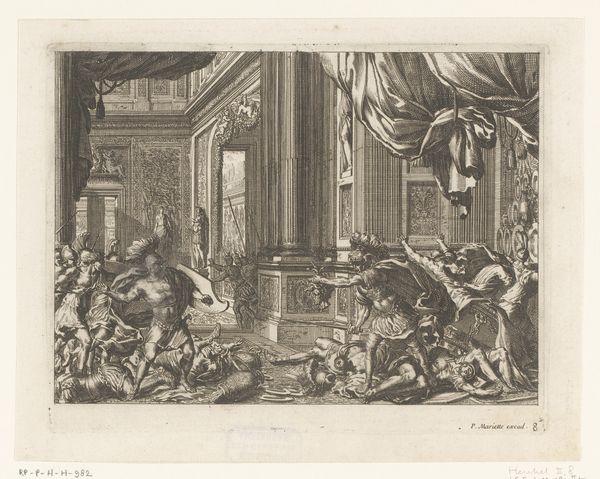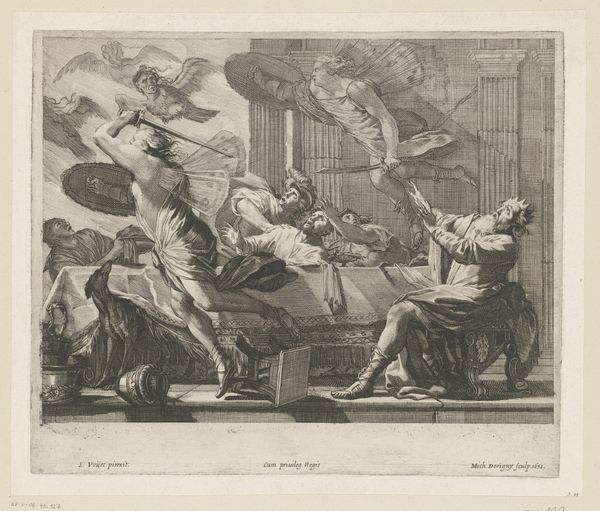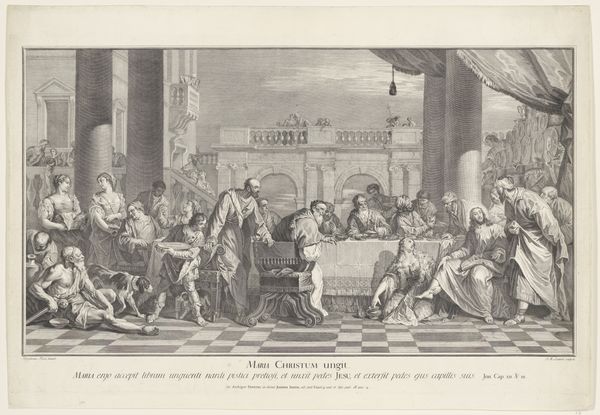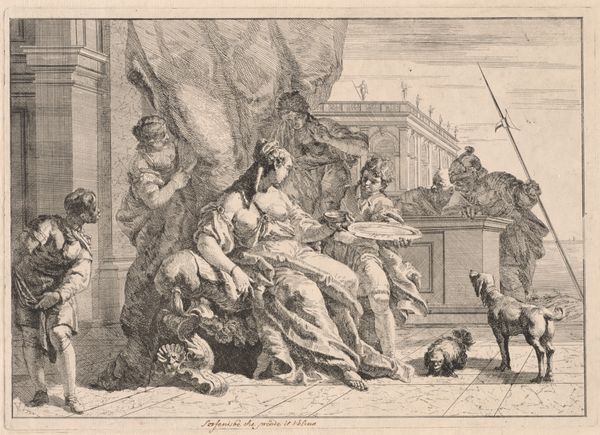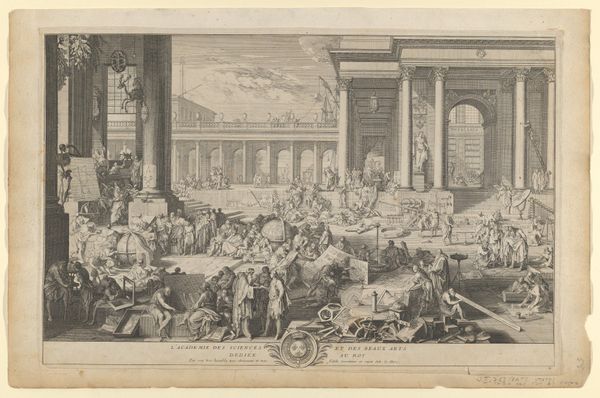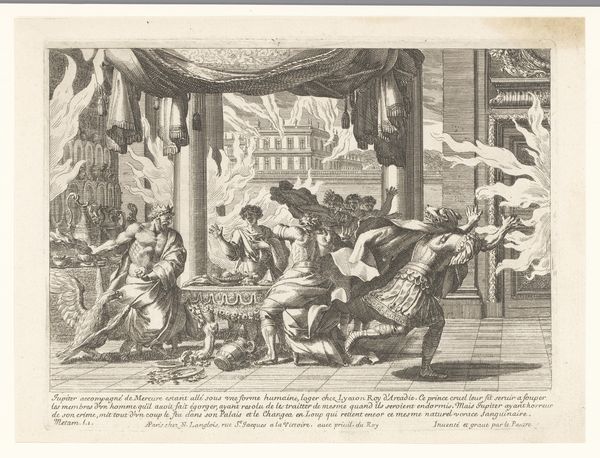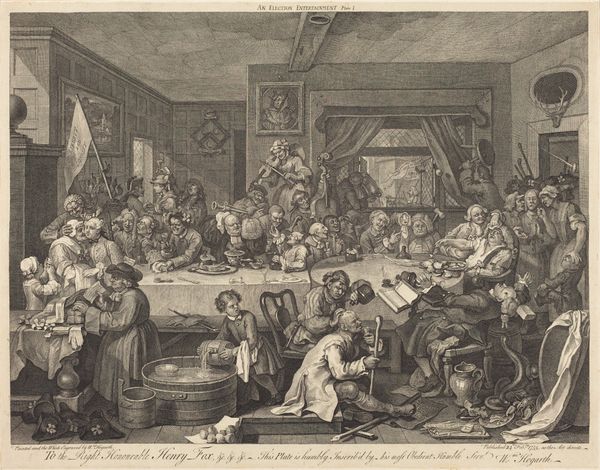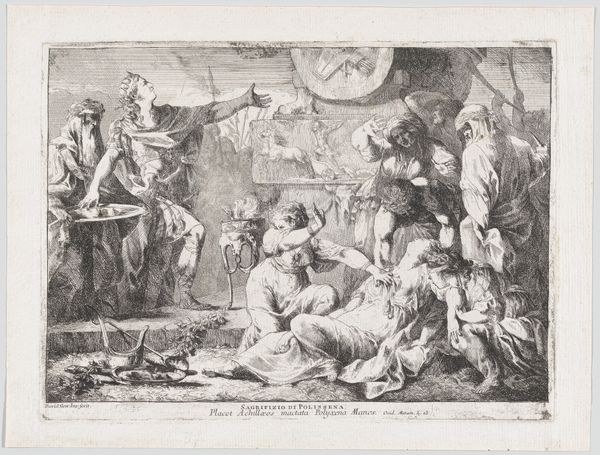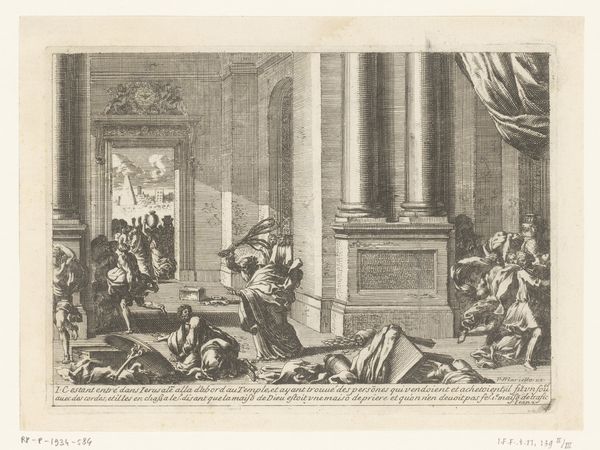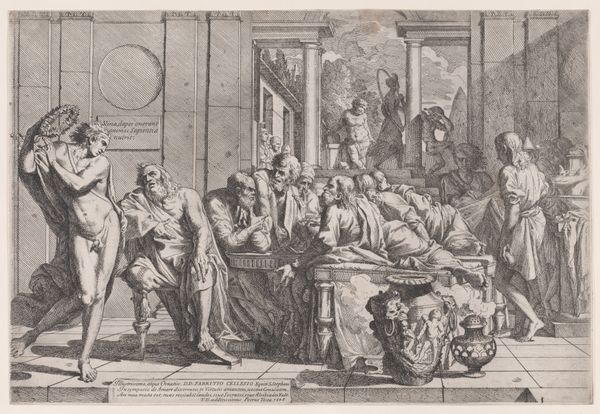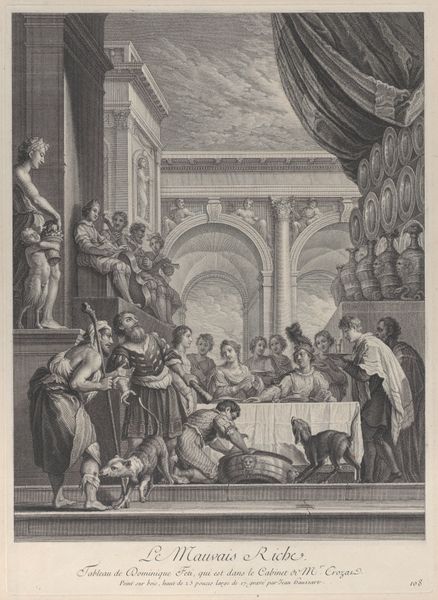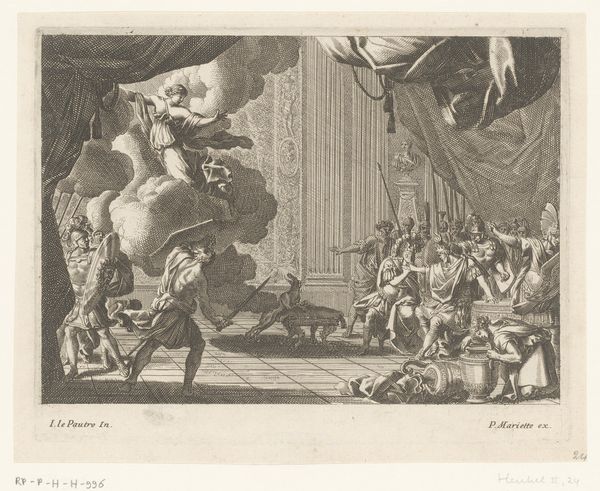
print, engraving
#
narrative-art
#
baroque
# print
#
old engraving style
#
figuration
#
history-painting
#
engraving
Copyright: National Gallery of Art: CC0 1.0
Curator: Today we're examining "Joseph Reveals Himself to His Brothers," an engraving by Gerard de Lairesse, depicting a powerful biblical scene. Editor: My first impression is one of overwhelming emotion. Look at the figures—the exaggerated gestures, the visible anguish. The contrast between the crisp architectural details and the chaotic scene unfolding creates a compelling tension. Curator: Exactly. Lairesse, working within the Baroque style, uses this dramatic visual language to amplify the narrative. The story of Joseph, sold into slavery by his brothers, then rising to power in Egypt, is laden with themes of betrayal, forgiveness, and ultimately, reconciliation. These familial bonds are historically fraught with complexity. Editor: Notice how the artist has used light and shadow to guide the viewer's eye. The figures in the foreground, particularly Joseph and his kneeling brothers, are bathed in light, while the background remains partially obscured. And observe the symbols present: The discarded garments could be connected to both Joseph’s captivity and his return to power, almost as markers for his dual role. Curator: Indeed, the strategic use of symbolism serves to reinforce the story's moral and spiritual dimensions. Think about the historical context. Visual representations of biblical stories were so essential to how values were promoted and shaped throughout societies in the past. How would people from diverse class or geographic backgrounds internalize images such as this? Editor: I’m also struck by the sheer volume of figures. This lends a specific characterization to the events: How important is this display of emotion, especially from Joseph in a position of power over them. This could speak to questions of cultural memory—images like this solidified shared understanding for different people. Curator: Absolutely. Lairesse provides viewers with ample evidence that forgiveness, acceptance, and compassion toward one's fellow human being must be attained even if it takes time. The fact this very act occurs within an environment of wealth underscores his access to social currency, too. Editor: It also provokes thinking about current ideas of gender and leadership—Lairesse situates Joseph in front, presenting and centering male actors within narratives like this. In so doing, women's social positioning, then and today, might be put into critical view. Curator: Agreed. This engraving speaks volumes about familial dynamics and historical memory when reconsidered alongside the intersectional experiences women contend with across our modern landscapes. It all boils down to that vital act of witnessing to cultivate awareness toward structural issues, I suppose. Editor: I appreciate how unpacking Lairesse's work can show what still continues to resonate in today's global realities; the visual cues he gave audiences hundreds of years ago now prompt even wider contemplation about history itself.
Comments
No comments
Be the first to comment and join the conversation on the ultimate creative platform.
